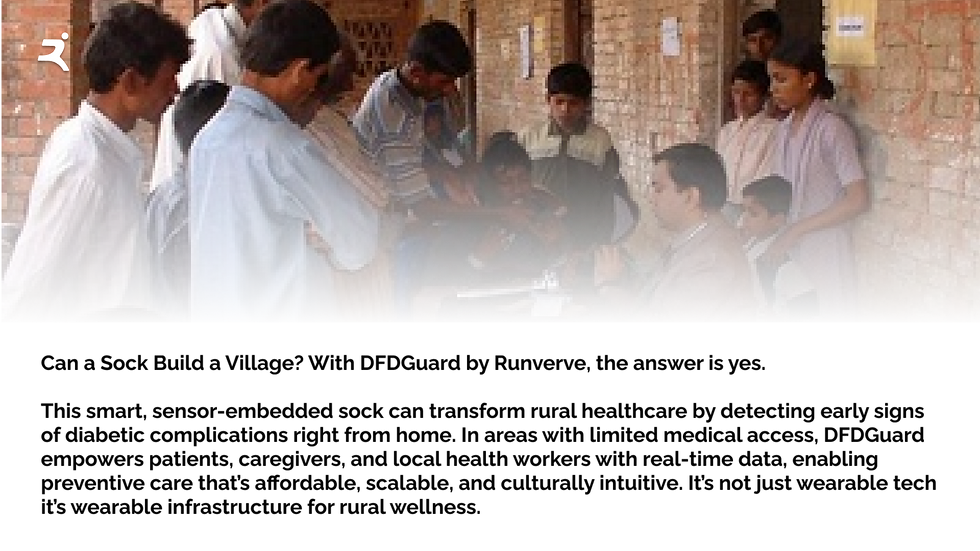Can a Sock Build a Village? How Smart Wearables Can Drive Rural Health Access
- Kavya s
- Jul 2
- 2 min read
In India’s rural heartlands, access to basic healthcare remains a daily challenge. Long travel times, under-resourced clinics, and a shortage of medical personnel mean chronic conditions often go undetected and untreated. But what if the solution wasn’t a hospital or a doctor’s office but something as simple and familiar as a sock?

Runverve's DFDGuard smart sock is more than just a health device. In low-resource areas, it's becoming a bridge to modern diagnostics, proactive care, and community empowerment. This isn’t just wearable tech. It’s wearable infrastructure.
The Rural Health Gap
Over 65% of India’s population lives in rural areas, but healthcare access remains uneven:

Limited clinics often lack diagnostic tools.
Patients delay care due to cost, distance, or lack of awareness.
Diabetes and chronic conditions are on the rise, with complications like diabetic foot disease (DFD) causing preventable amputations.
Public health campaigns struggle to scale, and education alone can only go so far. What’s needed is something that can be used daily, trusted culturally, and scaled affordably.
The Sock That Listens
Enter DFDGuard: a smart, sensor-enabled compression sock developed by Runverve to detect:

Plantar pressure asymmetries (early signs of ulcers)
Skin temperature shifts (inflammation)
Hydration and sweat irregularities (nerve and vascular damage)
The Community Ripple Effect
Runverve’s model includes local health workers and family caregivers as stakeholders. Through an easy-to-use mobile interface , real-time alerts can empower:
Patients to take preventive action
Families to support without needing clinical literacy
Health workers to triage effectively and prioritize high-risk cases
This decentralizes healthcare responsibility and distributes it across the village ecosystem.
Building Health Equity Through Design
Key features that make DFDGuard a public health success story:
Comfort-first, stigma-free design: Looks like regular socks, reducing resistance
Multi-lingual voice prompts: Helps overcome literacy barriers
Affordable at scale: Low-cost manufacturing and potential government subsidy support
It’s tech that doesn’t feel like tech. And that’s exactly why it works.
Final Word: From Fabric to Foundation
DFDGuard is not just a sock. It’s a sensor network, an educational tool, a caregiver alert system, and a silent advocate for better health.
In places where hospitals are scarce and doctors are few, a smart wearable can become a frontline clinic. A sock can build a village not in the physical sense, but in the empowered, connected, healthier way that truly matters.
Support inclusive health innovation at runverve.tech



Comments